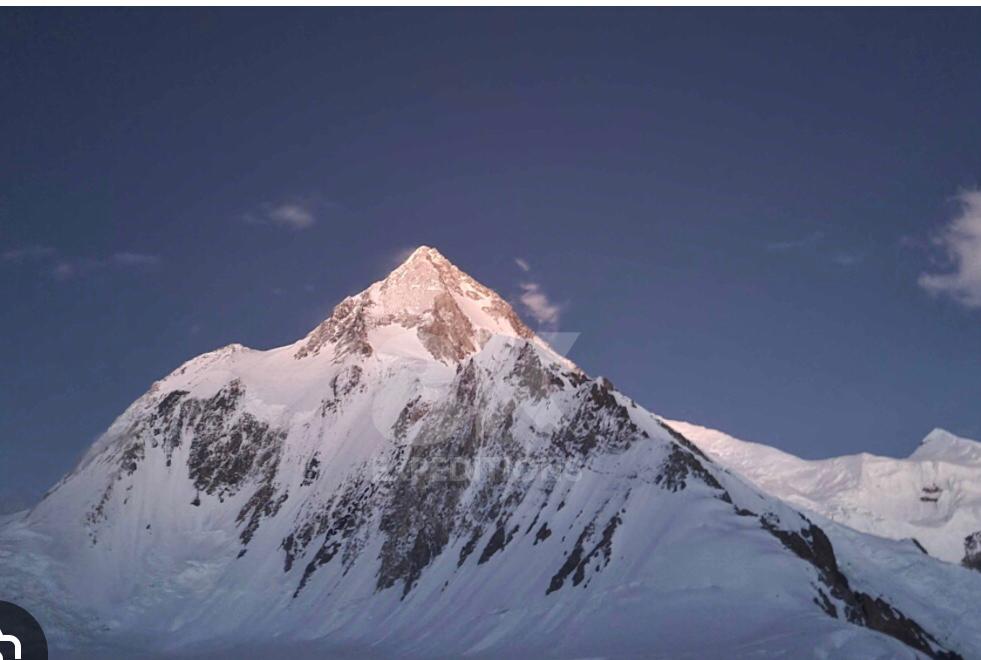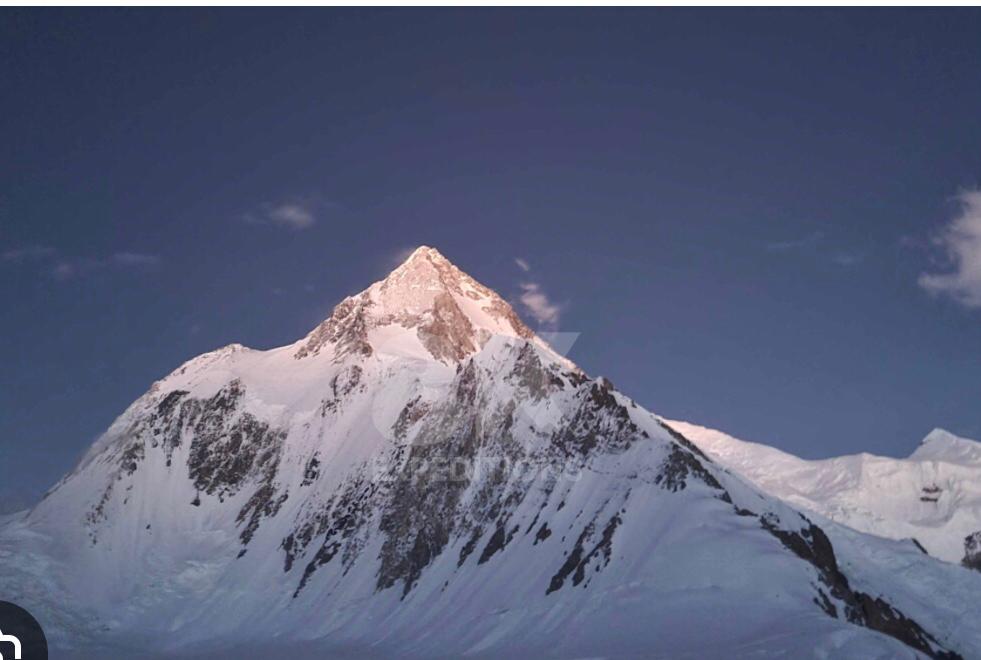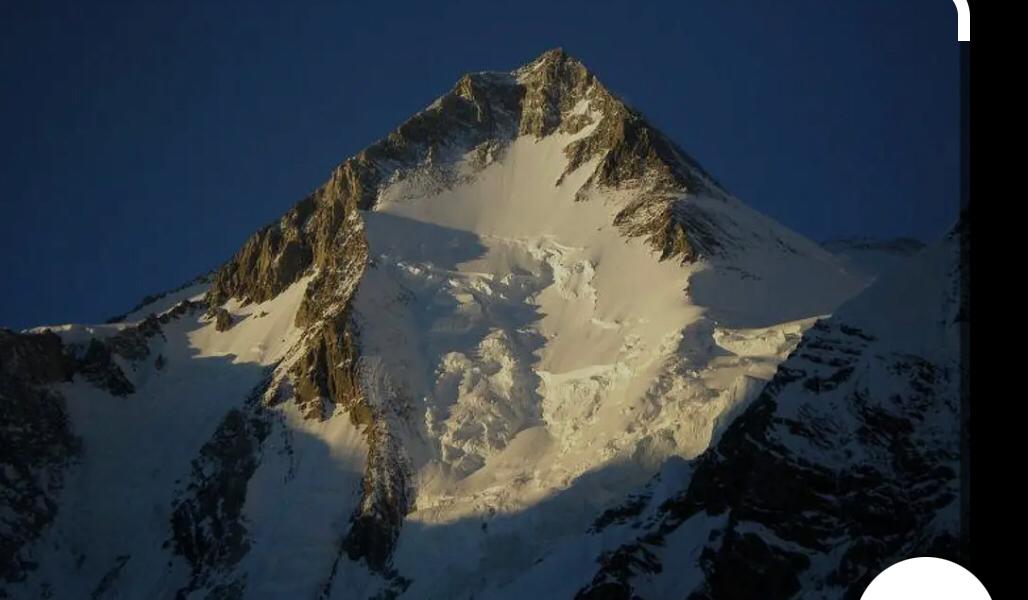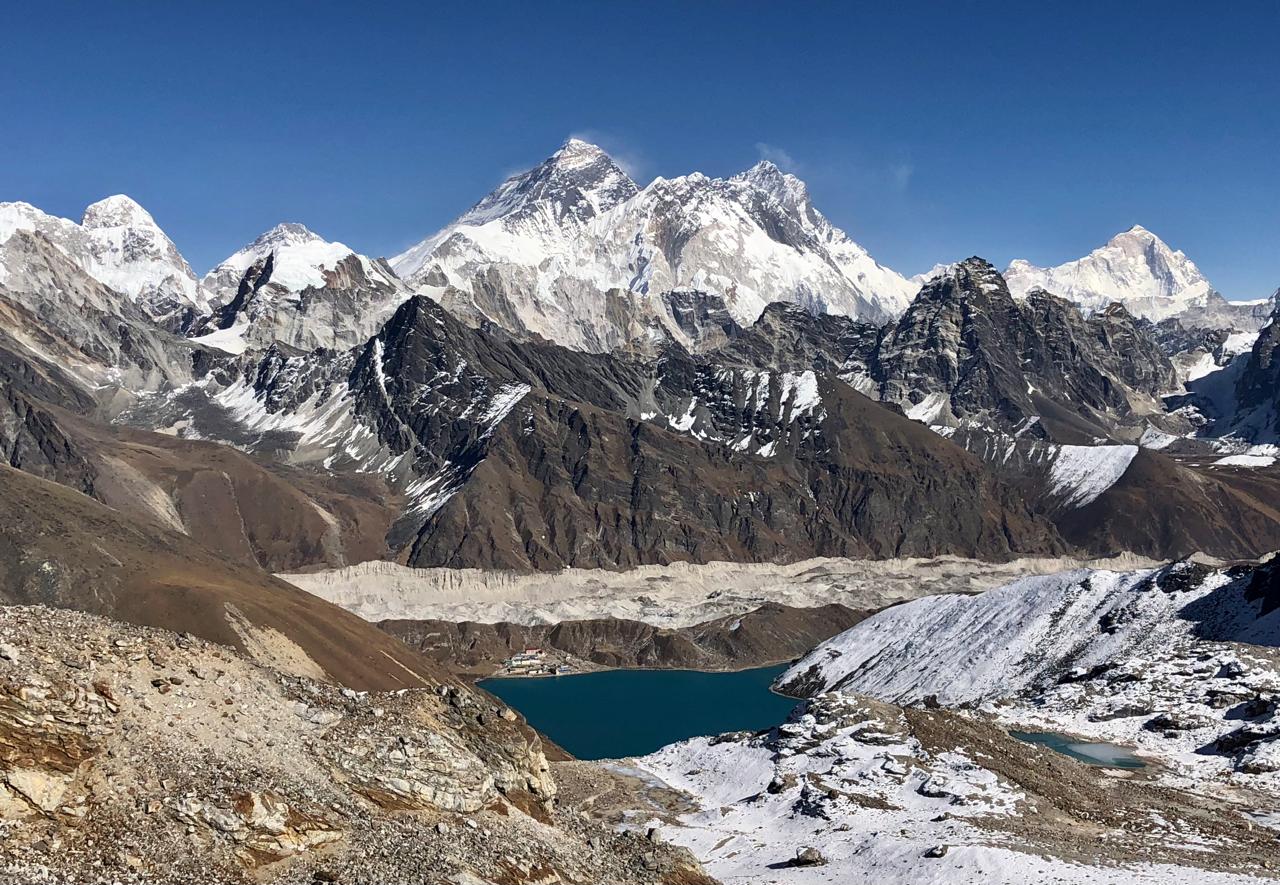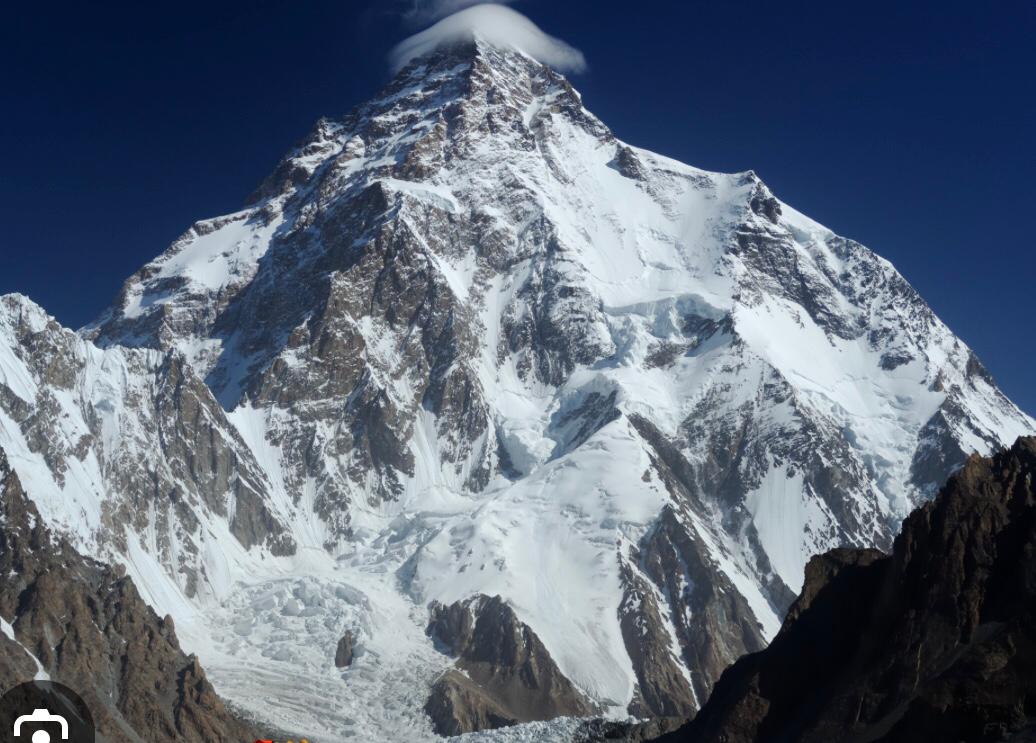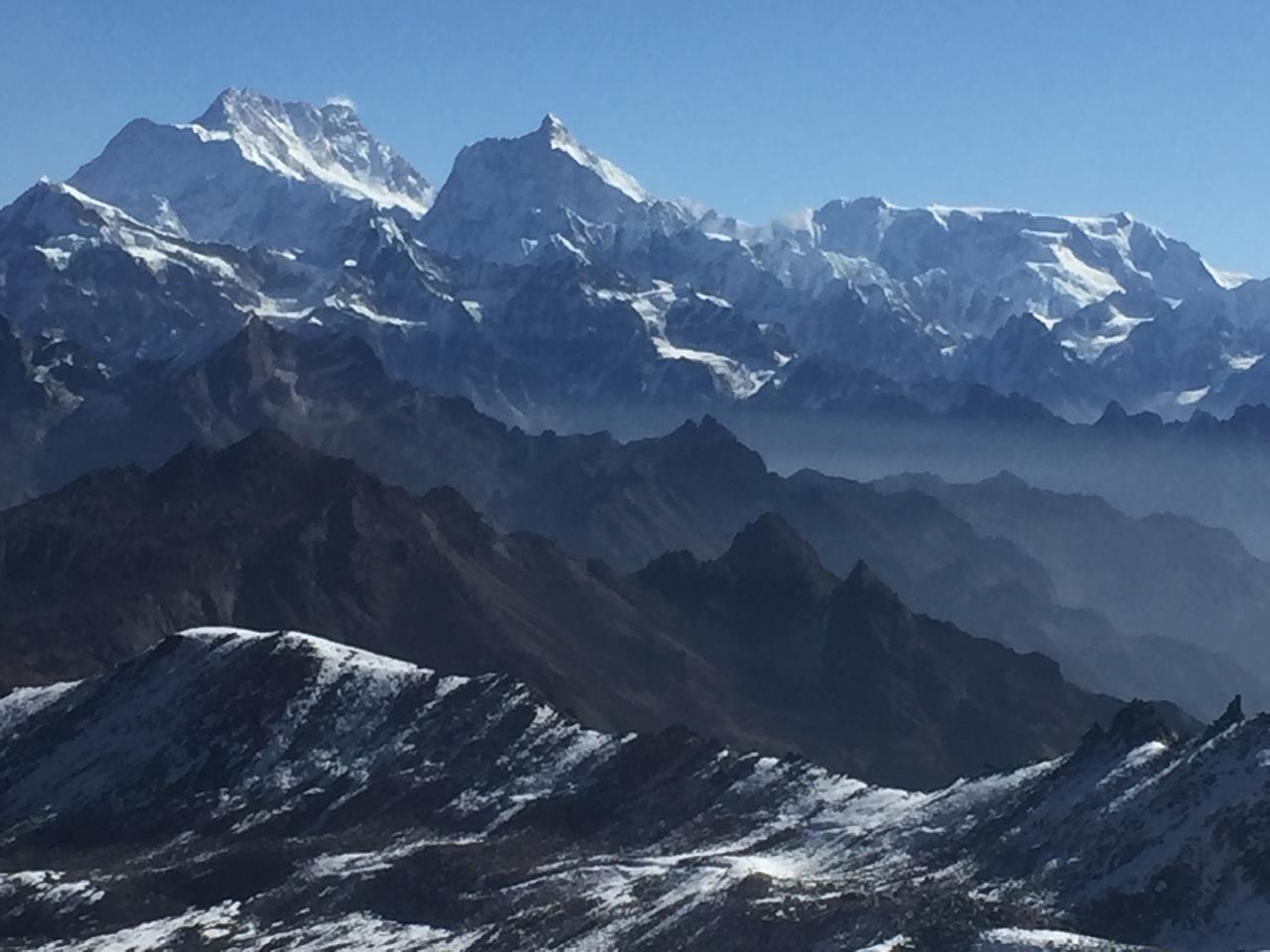Gasherbrum I, also known as Hidden Peak, stands at 8,080 meters and ranks as the eleventh-highest mountain in the world. Nestled deep within the remote Karakoram Range along the Pakistan–China border, it is part of the greater Gasherbrum massif, which also includes Gasherbrum II, III, and IV. While the name "Gasherbrum" is often translated as "Shining Wall" (a reference to the imposing face of Gasherbrum IV), its true origin lies in the Balti language, where rgasha means "beautiful" and brum means "mountain", an apt description of G1's elegant and remote presence.
Gasherbrum I holds a special place in mountaineering history and culture. It was first climbed in 1958 by an American expedition led by Nicholas Clinch. Unlike many of the more commercialized 8000-meter peaks such as Everest or Cho Oyu, G1 attracts climbers seeking a pure and serious alpine experience. Its isolation, infrequent traffic, and minimal infrastructure make it an ideal objective for mountaineers who value solitude, commitment, and a more self-reliant style of climbing in a raw natural setting.
The standard route to Gasherbrum I is via the Japanese Couloir, approached from the Gasherbrum Glacier. The ascent involves setting up three to four high camps, each positioned progressively higher on complex glaciated terrain. Climbers must navigate crevassed glaciers, steep ice slopes, and avalanche-prone snowfields. The terrain can be extremely challenging, especially under variable weather conditions, and demands a high degree of technical skill and preparation. This route is less frequented, which adds to both the challenge and the allure.
Due to the mountain’s remoteness and high altitude, climbers face extended approach treks and limited rescue options, requiring complete self-sufficiency. Acclimatization is essential, as is mental and physical resilience, with climbers often enduring long days in extreme cold and isolation. The unpredictable Karakoram weather further intensifies the challenge, often delaying summit attempts or cutting them short. Despite these hardships, successful ascents of G1 are deeply rewarding and represent a significant achievement in high-altitude mountaineering.
For those drawn to the less-trodden path, Gasherbrum I offers one of the purest and most scenic climbs in the 8000-meter realm. Its breathtaking alpine vistas, technical demands, and relative obscurity make it a favorite among experienced mountaineers seeking a meaningful and uncommercialized expedition. In a world where many peaks have become crowded and over-supported, G1 stands apart, beautiful, hidden, and fiercely proud.
Trip Notes:
Best Time to Visit:
-
Summer (June–August): The ideal climbing season in Karakoram, with relatively stable weather and optimal snow conditions.
Expedition Highlights:
-
Gasherbrum Base Camp (5,000 m): Remote and pristine, with panoramic views of G1, G2, and the surrounding Karakoram giants.
-
Concordia & Baltoro Glacier: One of the most dramatic trekking routes in the world.
-
Technical Alpine Climbing: A remote and serious 8000m peak with fewer climbers and more self-reliance.
-
Cross-cultural experience: Travel through Baltistan’s unique cultural region and traditional mountain villages.
Climbing Route
Standard Route (Japanese Couloir):
-
Ascend from Gasherbrum Glacier to Camp 1 (~6,000m) over glaciated and crevassed terrain.
-
Climb steep snow and ice slopes leading into the Japanese Couloir, a narrow gully with fixed ropes.
-
Establish Camp 2 (~6,700m) below the upper ice slope and continue ascending to Camp 3 (~7,300m).
-
Summit day involves:
-
Climbing a long snow ridge
-
Navigating steep, exposed sections with fixed lines
-
Using crampons, ice axe, and oxygen (optional, based on climber’s condition)
-
Descend via the same route to lower camps.
Difficulty Level:
-
Very High – Suitable only for experienced high-altitude climbers. The isolation, weather unpredictability, and technical sections require strong mountaineering skills.
Key Challenges:
-
Altitude & Acclimatization: Gradual adjustment is critical for safe progress above 7,000m.
-
Harsh Weather: Snowstorms, high winds, and poor visibility can delay or derail summit attempts.
-
Crevasses & Avalanches: The glacier approach and couloir route are prone to natural hazards.
-
Logistical Remoteness: Evacuation is difficult due to terrain and distance from urban centers.
Training & Preparation:
-
Physical Fitness: High-altitude endurance, strength training, and aerobic conditioning are essential.
-
Technical Skills: Experience in glacier travel, crevasse rescue, rope handling, and fixed-line ascents.
-
Previous Experience: At least one successful 6,000m+ and ideally an 8,000m+ summit recommended.
Safety Considerations:
-
Risk Zones: Icefall areas and crevasse zones between Camps 1–2.
-
Acclimatization Cycles: Multiple rotations to higher camps are essential before summit push.
-
Oxygen: Optional; typically used above Camp 3 depending on climber condition and weather.
-
Medical Backup: A basic medical kit and satellite contact for remote consultation will be available.
Permits Required:
-
Karakoram Visa Clearance
-
Gasherbrum I Climbing Permit (issued by Gilgit-Baltistan Council, Pakistan)
-
Baltoro Glacier Trekking Permit
-
Environmental Fee & Liaison Officer Fee
